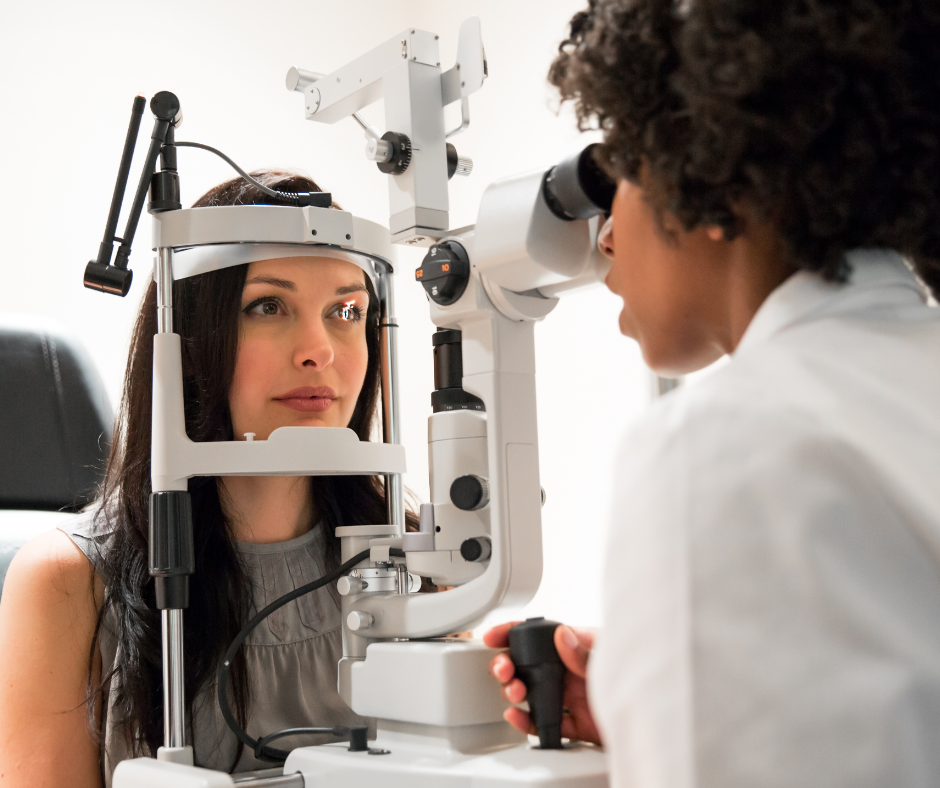
21 Oct The Importance Of Regular Eye Exams: Detecting More Than Just Vision Problems
When people think of eye exams, they often assume it’s just about checking vision. But in reality, regular eye exams go far beyond ensuring you see clearly. They can detect early signs of eye disease, chronic health conditions, and even issues that show no symptoms until they become serious. By making eye health a routine part of your care, you can protect not just your sight, but your overall well-being.
What Are Vision Problems?
Vision problems are any changes that affect how clearly you see. They may cause blurred vision, double vision, difficulty focusing, or trouble seeing in dim light. Common culprits include:
- Refractive errors like nearsightedness, farsightedness, astigmatism, and presbyopia.
- Age-related diseases such as cataracts, glaucoma, and macular degeneration.
- Eye muscle issues like strabismus, which can lead to double vision or lazy eye if untreated.
- Physical damage from accidents, sports injuries, or trauma.
While some of these conditions are easily corrected with glasses or contact lenses, others require early detection and medical treatment to avoid permanent vision loss.
The Hidden Risks Behind Vision Problems
Not all eye problems come with clear warning signs. Genetics, chronic diseases, and lifestyle choices often play a role. For instance:
- Genetics can increase your risk of conditions like congenital cataracts, retinitis pigmentosa, or amblyopia. Knowing your family history helps doctors monitor potential concerns early.
- Lifestyle factors such as smoking, poor diet, and lack of UV protection accelerate damage to the eyes.
- Chronic diseases like diabetes, high blood pressure, and high cholesterol can damage blood vessels in the eye, leading to diabetic retinopathy or retinal vein occlusion.
Your eyes don’t just reveal vision changes — they can act as an early warning system for your overall health.
The Digital Age And Eye Strain
We live in front of screens: phones, laptops, TVs, often juggling multiple devices at once. This has led to a sharp rise in digital eye strain, marked by headaches, dryness, blurred vision, and difficulty refocusing.
Simple strategies like the 20-20-20 rule (looking at something 20 feet away for 20 seconds every 20 minutes), using proper lighting, and wearing blue light–filtering lenses can make a significant difference. For those spending hours daily on screens, regular eye exams ensure early signs of strain or vision changes don’t go unnoticed.
Modern Diagnostic Tools
Advancements in eye care technology allow optometrists and ophthalmologists to detect conditions earlier than ever. These include:
- Optical coherence tomography (OCT): Provides detailed images of the retina and optic nerve.
- Automated perimetry: Tests peripheral vision, helping catch glaucoma in its early stages.
- Slit-lamp biomicroscopy: Offers a three-dimensional view of the eye’s front and mid-sections.
- Colour vision tests: Identify deficiencies or optic nerve issues.
Together, these tools provide a clearer picture of eye health and overall wellness.
Why Early Screening Matters?
Children should begin eye exams before starting school as early as age three since untreated issues like amblyopia are easier to correct when caught young. Adults should have their eyes checked every two years, while seniors or those with health risks may require annual exams.
Studies show early detection preserves vision. For example, home monitoring in age-related macular degeneration maintained vision at 20/40 or better in 87% of patients compared to 67% with standard care. Early action truly makes the difference between clear sight and vision loss.
Eye Exams Reveal More Than Vision Problems
A comprehensive eye exam can uncover systemic health issues long before other symptoms appear. These include:
- Diabetes: Detected through changes in retinal blood vessels.
- High blood pressure and cholesterol: Revealed by damaged or blocked eye vessels.
- Heart disease and stroke risk: Spotted through plaque or clots in eye arteries.
- Cancer: Tumours or skin cancer can be detected on or around the eye.
The eyes are, quite literally, windows to your health.
Debunking Common Myths
- “Reading in low light ruins your eyes.” False. It may cause strain, but not permanent damage.
- “Carrots improve vision.” While vitamin A helps prevent night blindness, it won’t correct refractive errors. Balanced nutrition with leafy greens, citrus, and omega-3s supports overall eye health.
- “Home remedies can cure eye problems.” DIY treatments may provide temporary relief but won’t treat conditions like glaucoma or cataracts. Professional care is essential.
Regular eye exams — not myths or quick fixes — are the key to lasting eye health.
Proactive Steps For Healthy Vision
To maintain strong eyesight and overall wellness:
- Have eye exams every 1–2 years (more often if recommended).
- Wear UV-protective sunglasses outdoors.
- Eat a nutrient-rich diet with green vegetables and fish.
- Manage chronic conditions like diabetes and hypertension.
- Limit smoking and reduce screen time.
Conclusion
Vision problems don’t just affect how well you see — they can be early signals of larger health concerns. From digital eye strain to serious eye diseases, routine exams are your best defence. By scheduling regular eye checks, adopting healthy habits, and separating fact from myth, you protect both your sight and your overall health.
Protecting your vision starts with a simple step: a comprehensive eye exam. At Dr. D’Orio Eyecare, we use advanced technology to detect issues early and keep your eyes healthy for years to come. Book your appointment today at drdorioeyecare.com/book-appointment or call 416-656-2020 (Toronto) or 416-661-5555 (North York). Clear vision and better health begin with proactive care.


